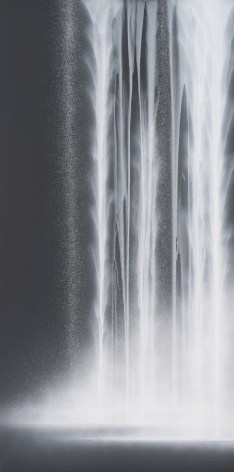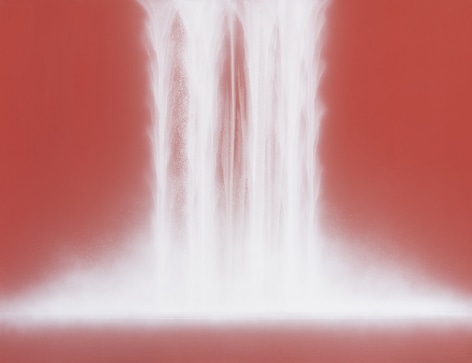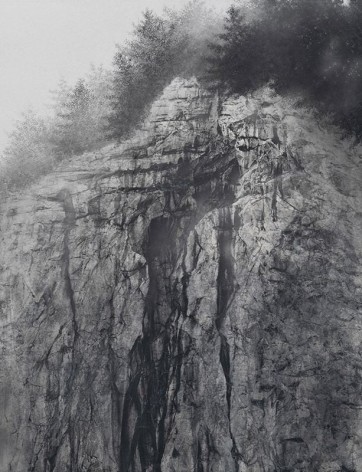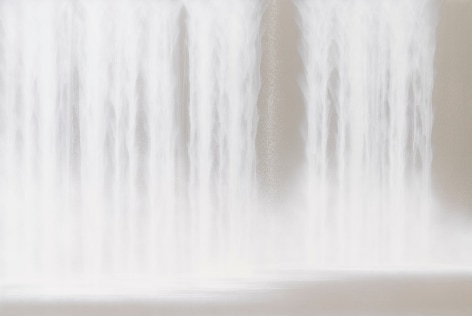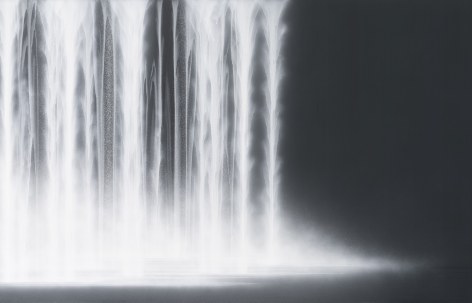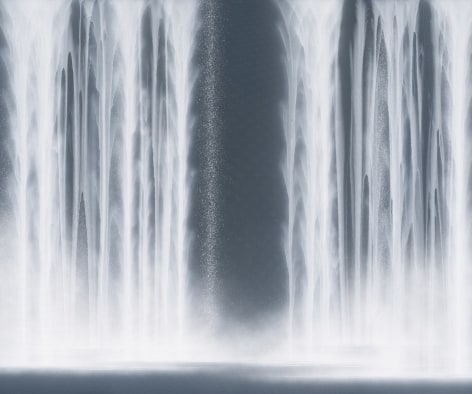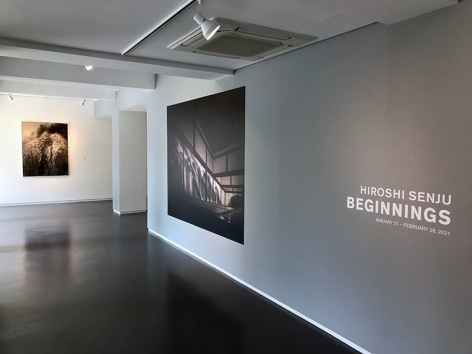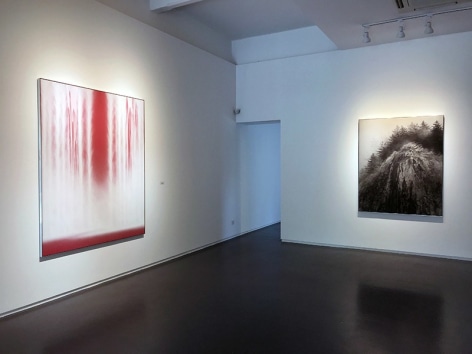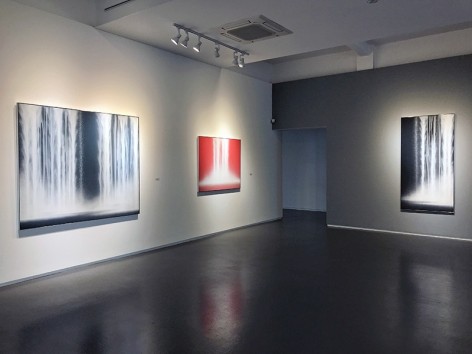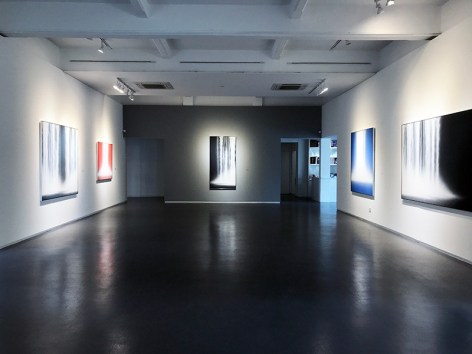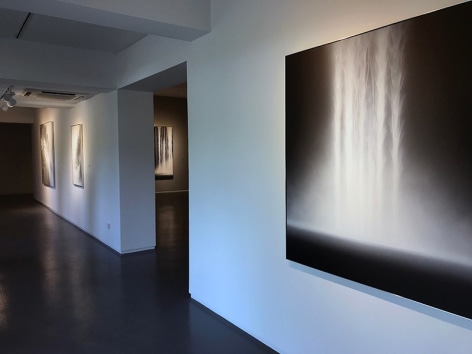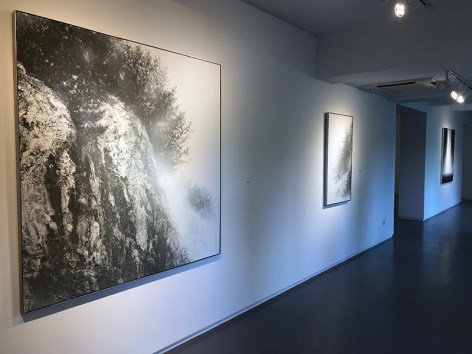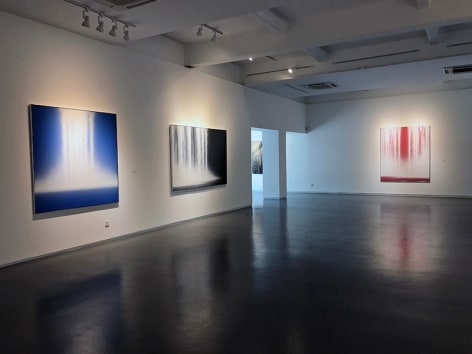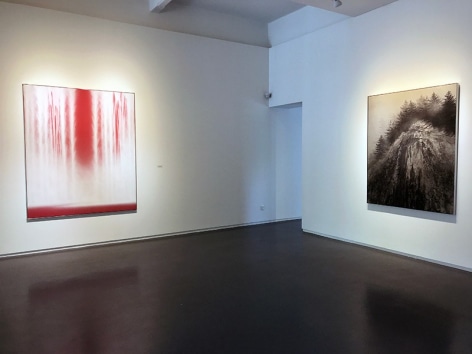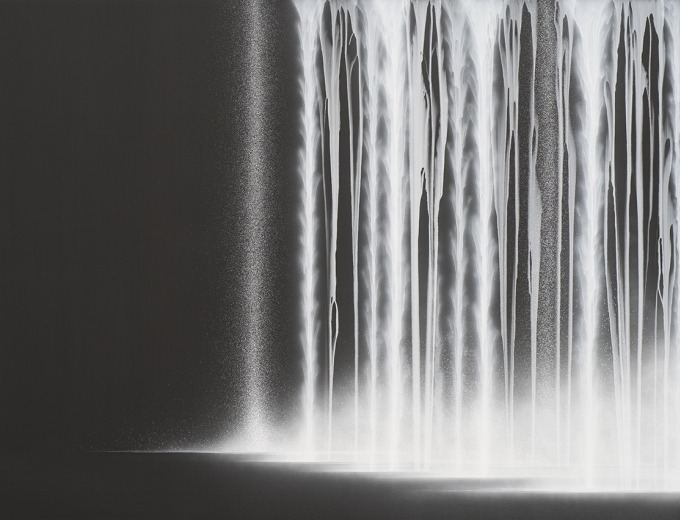
Sundaram Tagore Singapore presents dynamic new Waterfall paintings by Hiroshi Senju. This is the artist’s first new Waterfall series since 2015.
Over the past four years, the artist has been engaged in high-profile public projects, including two monumental paintings commissioned to mark the 1,200th anniversary of Kongobuji Temple at Koyasan, a UNESCO World Heritage Site, and a 20.4-meter-wide byobu or folding screen at Tokyo International (Haneda) airport, Terminal 2. Having finished these large commissions, he returned to his New York studio to complete waterfalls for Beginnings.
The creative process for the Waterfalls on view in Singapore started on the island of Oahu, Hawaii. The pristine beauty of Hawaii has inspired Senju’s work in the past, but it was the rugged, almost prehistoric landscape of Oahu’s northern side that struck a chord. “There are places where you can feel the energy of the beginning,” he says. “Here, I can feel the echo, the vibration of the Earth and the energy of Earth’s creation.” The artist has a profound connection to and love of nature. He has been conveying in paint its power and ability to inspire awe for more than 30 years.
For the first time, Senju produced Waterfalls using platinum pigment, which imparts a subtle luminosity and sheen. The artist, who mixes his own pigments using crushed rock, coral and other natural materials, used platinum for a small group of Cliff paintings created during the lockdown, but never before in waterfall images. “Platinum reflects the time we are living in,” Senju says. “It has been used to make art that has endured through wars, pandemics and natural disasters.” The exhibition includes two platinum Waterfalls and two of the artist's platinum Cliff paintings.
Alongside the platinum works and iconic black-and-white Waterfalls, Beginnings features Waterfalls in vibrant color, including red and blue. The use of vivid color is a departure from previous exhibitions, where Senju used a more restrained palette.
The artist explores a range of compositional formats, including sweeping verticals that amplify the sensation of the water’s power, energy and movement. He creates depth with asymmetrical, layered falls that conjure not just the appearance of rushing water, but also its sound, smell and feel. In other works, Senju aligns the waterfalls to one side of the composition, creating negative spaces that evoke stillness.
Beginnings will be on view through Singapore Art Week, which runs from Jan. 22–30. Click here for a schedule of events.
ABOUT HIROSHI SENJU
Senju began exploring the waterfall image in the early 1990s and his approach has continuously evolved since then. In 2003, he introduced vivid color, but returned to a refined black-and-white palette in 2007. Soon after, inspired by the luminous glow of neon signs on the streets of Tokyo, he began to experiment with fluorescent pigments that glow a sublime electric blue when viewed under ultraviolet light. These luminescent waterfalls were the subject of several solo gallery shows, as well as an immersive installation that was the centerpiece of Frontiers Reimagined at the 2015 Venice Biennale.
The Japanese-born New York-based painter was the first Asian artist to receive an Honorable Mention Award at the Venice Biennale (1995), and has participated in numerous exhibitions including The New Way of Tea, curated by Alexandra Munroe, at the Japan Society and the Asia Society in New York, 2002; and Paintings on Fusuma at the Tokyo National Museum, 2003. He was recently awarded the Foreign Minister’s Commendation from the Japanese government for contributions to art. In May 2017 he was honored with the Isamu Noguchi Award.
Public installations include seventy-seven murals at Juko-in, a sub-temple of Daitoku-ji, a Zen Buddhist temple in Japan, and monumental waterfalls at Tokyo International Airport (Haneda). The Benesse Art Site of Naoshima Island houses two large-scale installations. The artist’s two monumental paintings at the Kongobuji Temple at Koyasan—a waterfall and a cliff—were on view in major museums throughout Japan prior to their installation and consecration in October 2020.
Senju’s work is in The Metropolitan Museum of Art and Brooklyn Museum, New York; the Los Angeles County Museum of Art and the Museum of Contemporary Art, Los Angeles; the Asian Art Museum, San Francisco; the Nelson-Atkins Museum of Art, Kansas City, Missouri; the Royal Ontario Museum, Toronto; the Museum of Modern Art, Toyama, Japan; the Yamatane Museum of Art, Tokyo; Tokyo University of the Arts; and the Kushiro Art Museum, Hokkaido. In 2009, Skira Editore published a monograph of his work titled Hiroshi Senju. The Hiroshi Senju Museum Karuizawa in Japan opened in 2011.
Born in Tokyo, 1958 | Lives and works in New York

